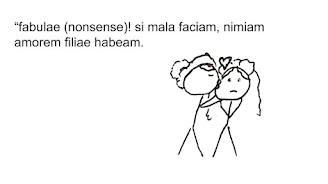Every year is different... but this year was DIFFERENT. I know every state, district, and school did it differently, but my district made it in the news repeatedly, mostly, this year, for the decisions the board made regarding school this year and the pandemic. Just a quick list of some things we... experienced:
- year starting off 100% in person
- sudden change to 100% digital
- change to 100% parent/student choice
- school choice in how to handle transitions from in person to digital, etc.
- some schools gave deadlines for when students could change from one to the other
- some schools said students could change whenever
- concurrent teaching (teaching in person and online at the same time)
- fire-y board meetings with intense comments from parents, students, and teachers
- this included comments from parents whose kids no longer attended public school with us
This is an oversimplified list. So, this year has been different... to quote TikTok: This year was "built different".
I'm not going to spend this post talking about everything I did this year, but I will list a few things I've talked about or have done that were unique to this year:
One other thing I did this year, this semester in particular, was to conduct a classroom action research study on the effects of Comprehensible Input on output, particularly in disabled students/students with disabilities. I did this as my thesis for my Special Education degree from Saint Mary's University in Minnesota. For those interested, you can
read the study here.
Needless to say, it's been a busy year for me. There are things I wish I had more time to do and there are things I wish I had explored more fully. But, it is May and next year is already gearing up to be an amazing and new adventure because... I am teaching an ESOL class in addition to Latin! It is going to be an exciting experience for sure.... But, back to this year.
As always, I give my students a three question survey at the end (okay 4 question). The questions were:
- What have we done that you've liked?
- What have we done that has helped?
- If you have magistra Patrick next year, what would you like more of?
- Is there anything else you want me to know (doesn't have to be school related)?
As always, nothing is a valid response. Answers are still rolling in, but so far I've gotten some great feedback that I want to share. This will definitely shape what I plan to do next year. So... Student response are in bold and my thoughts are highlighted purple. Ways it is going to affect what I do next year are written in teal.
We like games. Honestly though, who doesn't? This year we heavily employed blookets and gimkits in class and as asynchronous assignments. We also adapted the word chunk game to allow digital play (should I do a post on this?). Kids like games... fair enough. Next year I want to employ more hands on games, games that involve physical movement. I miss them!
CS Stories are helpful. This we knew. We worked to get immediate feedback when we implemented these. However, it is great to hear on the end of year survey because it has been a bit since we've done a CS story and so the fact that it stuck out in students' minds means it really is a great thing. Next year I want to employ them more often. We experimented with different ways to use them and I cannot wait to try more.
More hands on! Um... yes please! I miss this aspect of teaching in person. Universal Design for Learning (UDL) says we provide multiple forms of engagement, representation, and expression.... hands on things are the best for this! Things I am working on or have done in the past that I will continue with include: braille inclusion, use of Wikki sticks, student choice assignments. I also want to have a regular supply of play-doh, legos, and other physical things in my room.
The teacher is always willing to help students, no matter what. Okay, ya, this touched my heart. It is my goal to always answer with compassion and... it's hard when you are teaching concurrently and are always exhausted. I greatly appreciate this comment.
The way we do things. this is vague, but students remarked on how "non traditional" our classes are. One student specifically listed that we don't hand out vocabulary sheets for memorisation.
As always there were the typical listings of likes and things that helped including: games, movie shorts, story listening, and dictations. These things, of course, will go nowhere :)
I won't say I made lemonade out of lemons this year. (1) I hate lemonade; if I'm making anything out of lemons it's a lemon cake, and (2) I hate that saying. Buzzfeed recently used it to highlight 10 teachers and, while I appreciate the sentiment.... we all worked our butts off this year during a pandemic, during staff shortages (which are really living wage shortages), during substitute shortages, with lack of funds... and all the other things we regularly deal with... to say that we "made lemonade out of lemons" does not do accurately describe all we've had to deal with.... Rather, I did the best I could and I won't speak for anyone else on that matter. For me, the best I could meant answering with compassion, and listening to my students, all while trying to innovate and move my own professional skill forward. I have no regrets...
I learned a lot this year and I will definitely carry that forward... But I am SO ready for a new and better year. <3



















